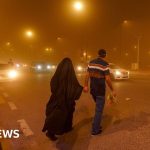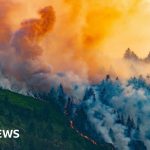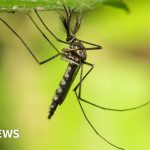In the months and years after research and working groups continued to assess procedures and rules.
“The work that happened very quickly at the time around the event got us to 90% of where we are now…but that has been consolidated and put into specific safety measures,” Mr Nicholson said.
Today there are three levels of volcanic ash contamination – low, medium and high, with guidance on how long a pilot can fly in those concentrations before causing significant damage.
“If something similar happened today, it will be up to the airlines to use their own permissions from the engine manufacturers and their own safety cases to decide where and when, based on forecasts, will allow them to go,” Mr Nicholson added.
“And that will be different for each airline as some may accept higher or lower levels of ash as acceptable.”
There has also been a massive development programme in the monitoring and forecasting of volcanic ash.
As a direct result of the ash cloud the Met Office deployed permanent LIDAR instruments that point a laser into the sky capable of measuring ash concentrations.
New satellites have also been launched globally which enable scientists to monitor ash concentrations every 15 minutes.
In addition there have been advances in computer modelling to improve the physics and processes involved in how different shapes and sizes of volcanic ash behave in the atmosphere.








